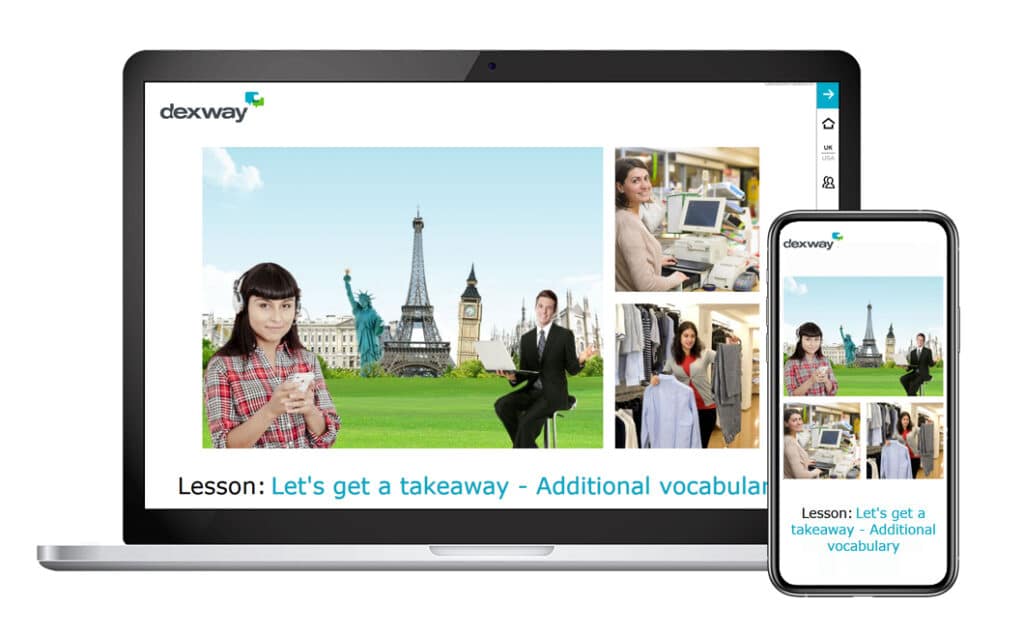The educational world is changing. The growth of the digital learning platform had had a huge impact on how courses work, both for e-learning educators and more traditional educational institutions. As a result of this, many classroom based course providers are exploring the idea of introducing blended learning.
Students and potential students now expect to be given access to a wide range of online resources. This is true whether the bulk of their teaching time is delivered on an online learning platform or face to face in the classroom.
Schools, colleges, universities, language schools and professional development course providers all need to work out how to provide this access. Those educational institutions who are unable to do this may find that they get left behind.

What is blended learning?
Blended learning is the term given to the educational practice of combining digital learning tools with more traditional classroom face to face teaching.
In a true blended learning programme, both the student and the teacher should be physically located in the same space. Despite this, the digital tools used should be able to be utilised by the students in order to enforce some control over the speed or topics of their learning.
The flipped classroom model is a similar program that aims to utilise technology in order to rearrange the learning experience and maximise the effectiveness of valuable face to face time in the classroom. In a flipped classroom programme, students would be encouraged to access digital learning materials via a cloud-based learning platform during their own time.
Resources such as video lectures, podcasts, recordings and articles would be provided in order to transfer the main bulk of the necessary knowledge from teacher to student before each class. This then frees up time in class for teachers to support students in activities, lead discussions and facilitate engagement.

Why is this beneficial?
Introducing blended learning and the flipped classroom method is beneficial as they both seek to make the traditional classroom model more engaging for the students. Generally speaking, the more control students have over their own learning experience, the more likely they are to remain engaged.
A 2014 report compiled in the USA by the Alliance for Excellent Education and the Stanford Centre for Opportunity Policy in Education (SCOPE) concluded that when it is used effectively, technology can both boost engagement from students and can result in significant gains in student achievement. These improvements were of particular value to those students who were previously most at risk of poor achievement.
In addition to improving engagement and attainment, introducing blended learning and flipped classroom teaching can also open up new learning opportunities. Using a learning platform can enable a teacher to engage with students in new and exciting ways. A learning platform can also automate assessment and marking, which frees up the teacher for more face to face time with students.

How can blended learning be used in a traditional classroom environment?
If you’re unsure about introducing blended learning practices into a traditional classroom environment, please be assured that the process is likely to be far less daunting than you are imagining.
There are so many easy ways to begin to incorporate learning platform technology into the classroom. Why not consider some of the following ideas?
#1. Consider which aspects of your class teaching are successful, and which are not. Once you have identified some areas for improvement, explore how these elements could be replaced with digital options.
#2. Begin to curate a collection of online resources that are relevant to your course.
#3. Supplement classroom time with ongoing digital discussion groups.
#4. Experiment with flipped classroom methodology and ask students to watch a relevant video or documentary online before class, then use that video as a starting point for facilitating a class debate.
#5. Invite students to use digital devices or computers during class time in order to support their work. They could use them to do additional research or do online revision activities.
#6. Move assessment online. Digital assessment tools tend to be far more effective for everyone involved than paper assessments as they collect really valuable data for teachers to work from.
#7. Ask students to work together on group work that can be completed both in the classroom and via an online educational platform.
What are the first steps?
Interested in moving forward with blended learning or flipped classroom methodology? One of the first steps is to ensure you have the right digital framework in place.
A digital learning platform such as a learning management system (LMS/LCMS) will support all your online and offline courses and ensure that your students are able to access all the material they need, whenever and wherever they need it.
Want to know more about what a LMS/LCMS could offer you and your institution? Contact us.
You may also like:

